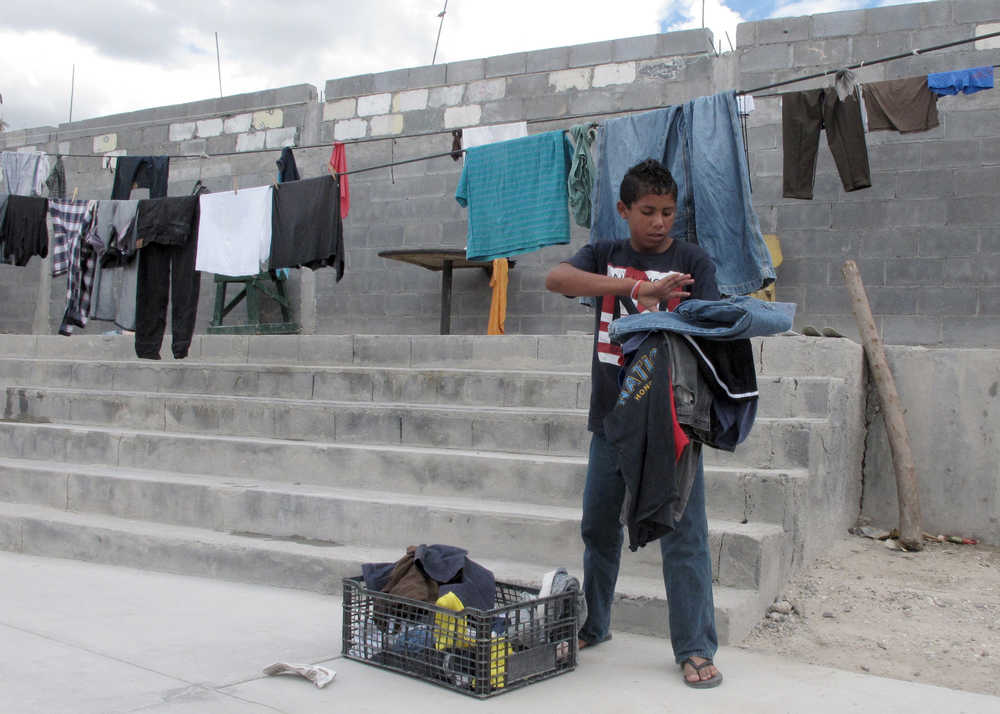REYNOSA, Mexico — Before 14-year-old Brian Duran set out from central Honduras in mid-April, he heard that child migrants who turned themselves in to the U.S. Border Patrol were being cared for and not deported.
He knew that a couple of friends who left before he did had given themselves up after crossing and been reunited with family in the U.S. Sitting inside the walled compound of a migrant shelter in this Mexican border city across the Rio Grande from Texas, Brian wonders if that is still the case as he seeks a way to make his own crossing.
“I don’t know what the environment is like now, if they (Border Patrol) are supporting or if they are returning the minors,” he said Tuesday. He said he has an uncle in the U.S., but doesn’t know where because he lost his number while journeying north.
Brian isn’t alone in trying to get into the U.S. In the past eight months, 47,000 unaccompanied children have been apprehended along the border in the U.S. Southwest.
More than 11,000 of those were Mexican children, who are generally quickly sent back across the border. But nearly 35,000 were from the Central American countries of Honduras, Guatemala and El Salvador. By contrast, just 6,560 child migrants were put in U.S. shelters during all of 2011.
President Barack Obama called the surge a crisis Monday, saying the influx has overwhelmed the network of U.S. shelters for young migrants. He appointed the head of the Federal Emergency Management Agency, Craig Fugate, to lead the government’s response. The Obama administration has asked Congress for $1.4 billion in extra funding to help house, feed and transport child migrants and has turned to the Defense Department to temporarily house some of them.
Detained youngsters are transferred within 72 hours to the Department of Health and Human Services’ Office of Refugee Resettlement to be housed in shelters until they can be reunited with parents or guardians. Officials then begin searching for relatives or other potential guardians in the U.S. The average stay for a child in a U.S. shelter was 45 days last year. Most are reunited with family to wait for their immigration cases to move forward.
A variety of reasons put young migrants on the path to the U.S.
“The children don’t only travel because of poverty or reunification. In a recent study we have detected that another important theme is migration because of insecurity,” said Julia Gonzalez, coordinator of the nonprofit National Bureau for Migration in Guatemala.
A study released in March by the United Nations High Commissioner for Refugees said about half of 400 kids interviewed reported they had experienced or been threatened with serious harm. About 300 of those interviewed were from El Salvador, Guatemala and Honduras — countries that accounted for about 90 percent of the children cared for by the Office of Refugee Resettlement last year.
Brian said he left Comayagua, Honduras, because “there is so much poverty there, the crime is tremendous. You’ve got to sort things out because if not, you’ll starve to death.”
He said his older brother got into trouble with gangs and drugs.
“I don’t like that,” Brian said. “I’m used to working, earning a living.” He sold agoutis, medium-sized rodents, as pets to earn enough money to make his trip north. But he arrived in Reynosa penniless and now hopes his sister in the Mexican state of Jalisco can send him money to cross the border.
Honduras, Guatemala and El Salvador have rampant street gangs and a strong presence of organized crime and drug traffickers resulting in some of the highest homicide rates in the region and in the world. Honduras has the highest murder rate in the world, with 90.4 homicides per 100,000 inhabitants, according to the U.N. Office on Drugs and Crime.
Honduras’ economic growth of 3 percent in 2013 was largely based on money sent home by migrants. Almost 60 percent of the country’s 8 million people live in poverty, the World Bank says.
Often, child migrants from Central America face the greatest dangers in Mexico, where gangs prey on them as they ride trains and buses north toward the U.S. border.
Mexico’s undersecretary for North America, Sergio Alcocer, said his government is coordinating with U.S. authorities and those in Central America.
“Mexico has maintained that the only way to deal with such a complex phenomenon … is under the principal of shared responsibility,” Alcocer said. He said Mexico plans to raise the issue at a regional immigration conference in Nicaragua later this month.
At the Senda de Vida shelter in Reynosa, a short distance from the Rio Grande, Brother Hector Silva said more and more children like Brian are arriving.
“Our responsibility is to attend to them and not to take from them the vision that they carry,” he said.


